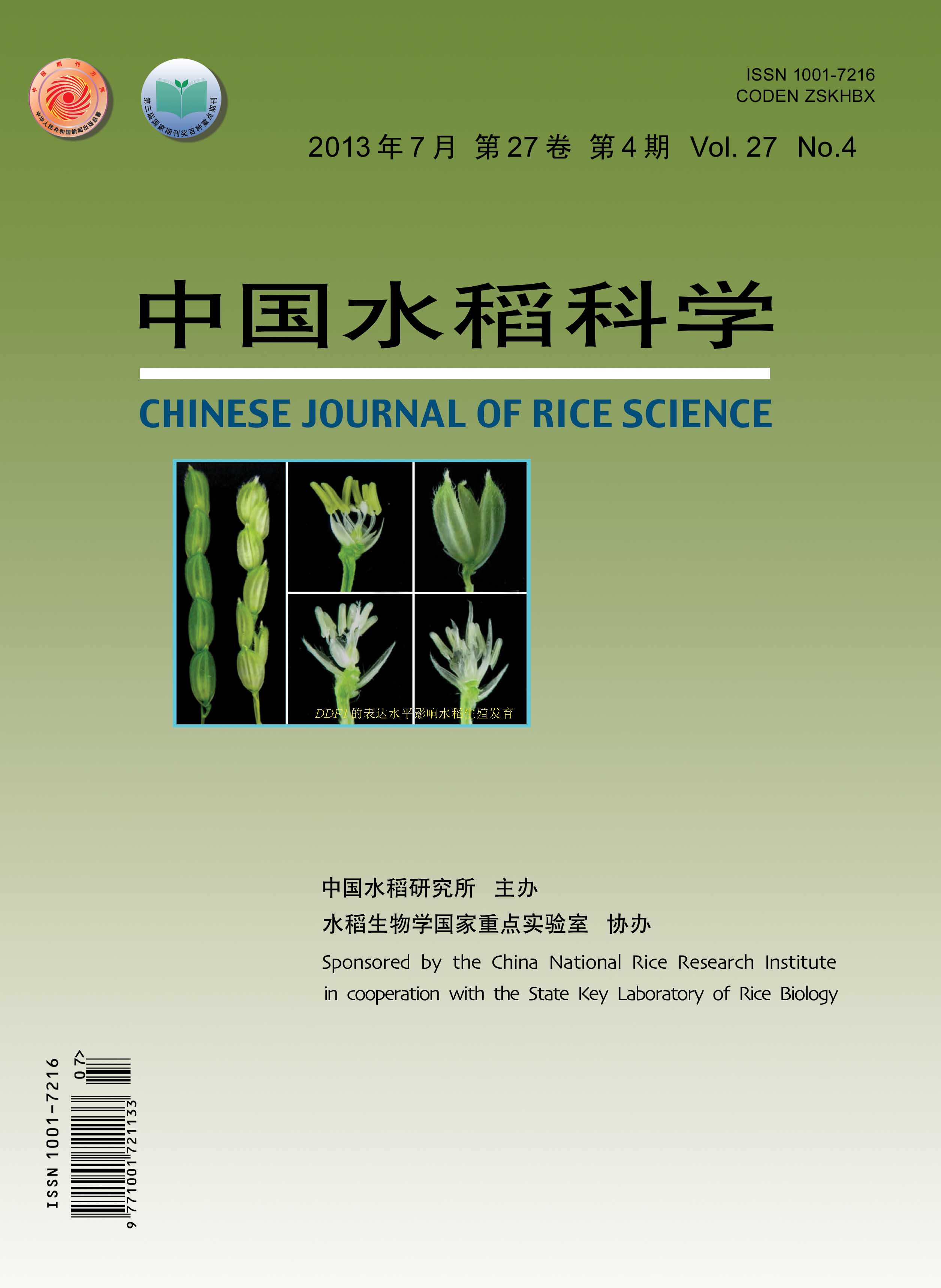|
|
Relation Between Root Traits and Growth Duration in japonica Rice Cultivars
DONG Guichun, CHEN Chen, WANG Yi, ZHONG Jun, YUAN Qiumei, YANG Bing, YU Xiaofeng, LI Jinqian, TIAN Hao, ZHANG Yan, JIANG Yaming, MENG Lingxiang, WANG Yulong*
2013, 27(4):
398-404.
DOI: 10.3969/j.issn.1001-7216.2013.04.009
To investigate the relation between root traits and growth duration in japonica rice cultivars, a total of 94 conventional japonica rice varieties were solutioncultured in 2008 and 2009, respectively, and growth duration (GD), dry matter weight of different part in rice plant, and root related traits were measured for each cultivar. Based on GD, the rice varieties were clustered, by MinSSw method, into six types (namely A, B, C, D, E, and F in the alignment from low to high). Then the differences of root related traits for various types were analyzed. Results showed that with prolonging GD, no significant change in the numbers of adventitious roots was observed, while root dry weight, total length of adventitious roots per plant and the maximum root length increased or significantly increased. In general, total/active root absorption area and root activity per plant increased or increased at first then decreased with the elongation of GD. Similar but yearrelated trend was observed in root traits on panicle basis. The cultivars with longer GD had the medium numbers of adventitious roots, higher root dry weight, longer total/maximum length of adventitious roots, higher root total/active absorption area and higher or medium root activity, calculated on both of plant and panicle basis. Except for number of adventitious roots, the tested traits on the basis of plant or panicle differed significantly among cultivars. The length and weight of single adventitious root were significantly affected by GD, while the single root diameter was not affected by GD. The japonica rice varieties with longer GD had obvious advantages on the most of root traits per plant, due to the improvement of root traits including root length and root dry weight on a basis of panicle or single adventitious root.
|

